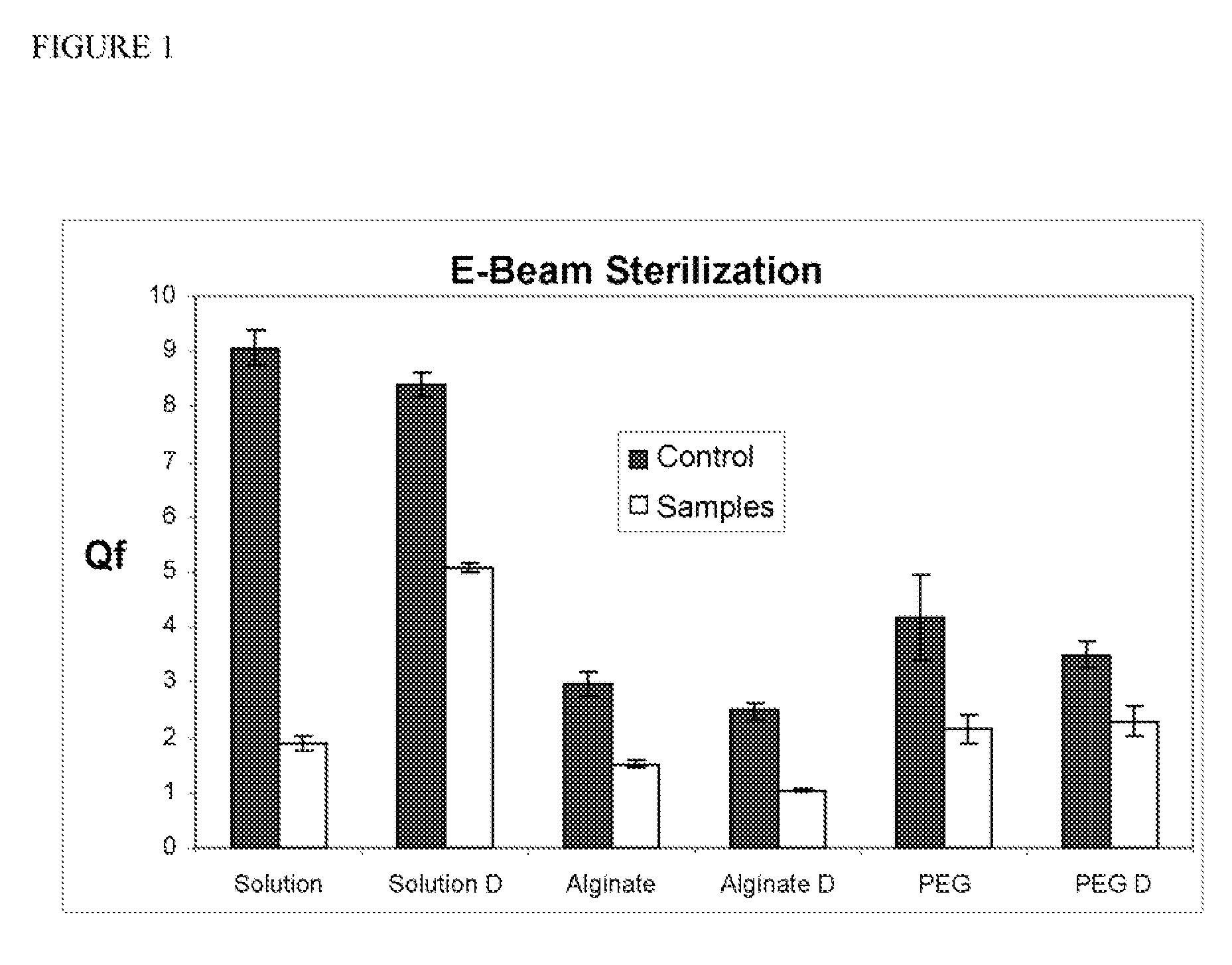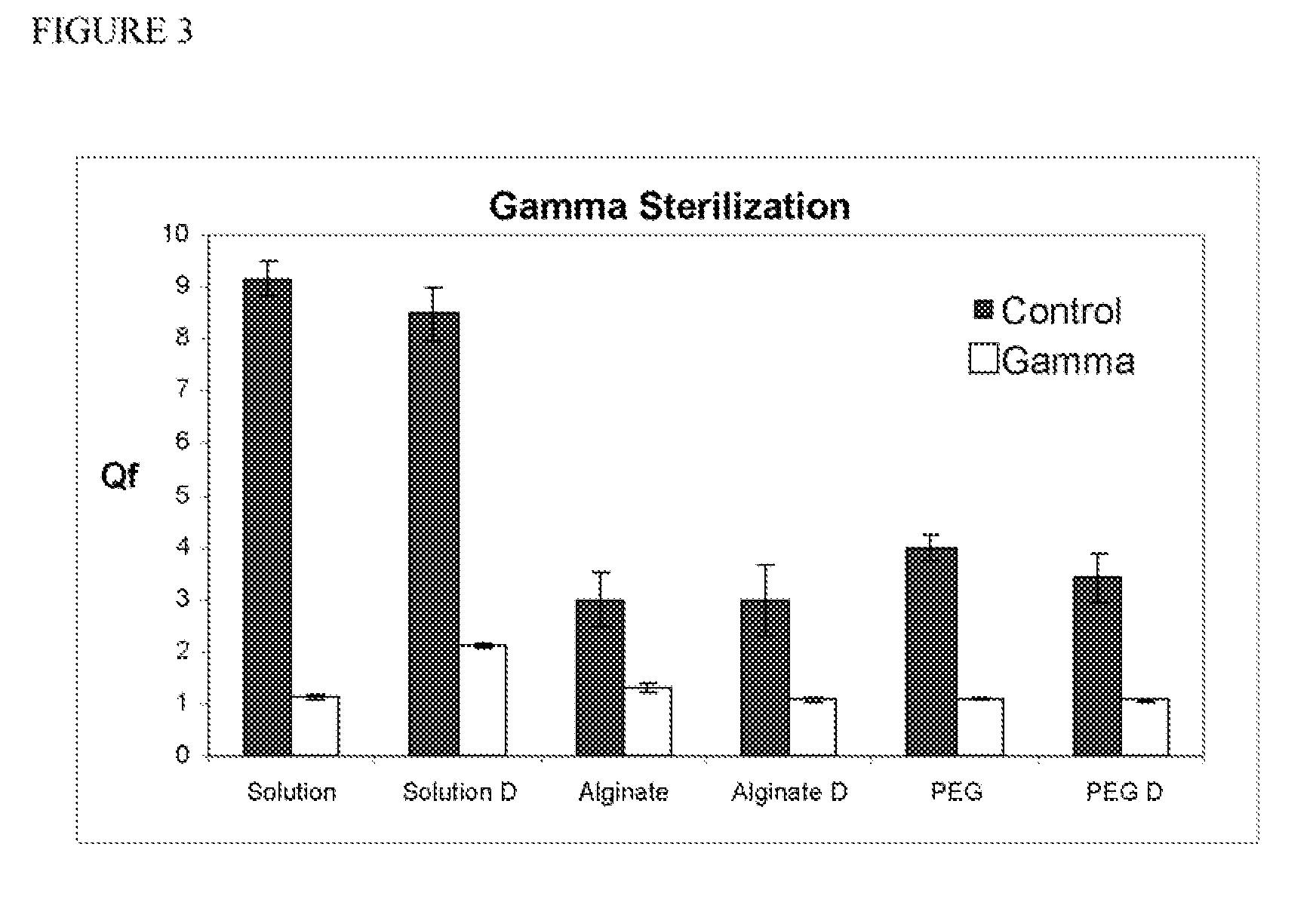Sterilization of Biosensors
a biosensor and sterilization technology, applied in the field of sterilization of biosensors, can solve the problems of difficult prediction of the radiation effect on the properties of proteins, and newer, more sophisticated biosensors utilizing pbps or other proteins that require conformational changes for signal transduction, and may be particularly susceptible to denaturation
- Summary
- Abstract
- Description
- Claims
- Application Information
AI Technical Summary
Benefits of technology
Problems solved by technology
Method used
Image
Examples
example 1
Preparation of Alginate Disks and PEG Disks Containing a Binding Protein Entrapped in a Matrix
[0044] A fluorescent-labeled triple mutant of GGBP (“the 3M protein”) was prepared as follows. The 3M protein is a GGBP protein (GenBank Accession No. P02927, without the 23 amino acid leader sequence), and where a cysteine is substituted for an glutamic acid at position 149,an arginine is substituted for an alaninie at position 213 and a serine is substituted for leucine at positiont 238 (E149CA213RL238S). The 3M protein was labeled with IANBD, and the NBD-labeled 3M protein was prepared as described in U.S. application Ser. No. 10 / 040,077, filed Jan. 1 2002, now U.S. Pat. No. 6,855,556 and Ser. No. 11 / 077,028, filed Mar. 1, 2005, and published as U.S. Pre-grant Publication 2005 / 0239155 both of which are incorporated herein by reference.
[0045] Alginate disk were prepared in the following manner. A mix of 2% Alginate in sterile water by weight was prepared. To this solution we added 0.1 M...
example 2
Electron-Beam Sterilization of Non-lyophilized and Lyophilized Disks as Prepared in Example 1
[0049] The wet and dry disks of Example 1 were sterilized using electron-beam radiation. In addition, protein in solution and lyophilized protein were also irradiated using electron-beam radiation. In this experiment, the 20 kiloGrays (2 Mrads) (6.25 kGy / sec) were used, and the dose was confirmed by dosimeter.
example 3
Gamma Radiation Sterilization of Non-Lyophilized and Lyophilized Disks as Prepared in Example 1
[0050] The wet and dry disks of Example 1 were sterilized using gamma radiation. In addition, lyophilized and non-lyophilized protein in solution was also irradiated using gamma radiation. In this experiment, the 20 kiloGrays (2 Mrads) was used. In this experiment, the 20 kiloGrays (2 Mrads) (8.33 kGy / hr) were used, and the dose was confirmed by dosimeter.
PUM
| Property | Measurement | Unit |
|---|---|---|
| concentrations | aaaaa | aaaaa |
| pH | aaaaa | aaaaa |
| pH | aaaaa | aaaaa |
Abstract
Description
Claims
Application Information
 Login to View More
Login to View More - R&D
- Intellectual Property
- Life Sciences
- Materials
- Tech Scout
- Unparalleled Data Quality
- Higher Quality Content
- 60% Fewer Hallucinations
Browse by: Latest US Patents, China's latest patents, Technical Efficacy Thesaurus, Application Domain, Technology Topic, Popular Technical Reports.
© 2025 PatSnap. All rights reserved.Legal|Privacy policy|Modern Slavery Act Transparency Statement|Sitemap|About US| Contact US: help@patsnap.com



